Larisa Botnaryuk
Year of birth: 1985.
Your education:
2002 – Children’s Art School (Chisinau).
2007 – Ion Creangă State Pedagogical University, Faculty of Fine Arts and Design, Specialization in Decorative and Applied Arts (Chisinau).
2011 – Svetlana Voskresenskaya’s School of Puppet Design (Moscow).
2024 – Ludmila Lipovskaya’s Online School of Textured Painting.
2022 – Andrey Volkov’s Online School of Profiling.
Describe your art in three words: Fantasy, Surrealism, Abstractionism.
Your discipline: textured and interior painting, graphic art and illustrations, sculpture, tattoos, interior objects, and custom dolls.
Website | Instagram
Your artwork features a unique blend of textures and materials. Can you explain your creative process and how you choose the materials for each piece?
An idea or a thought comes first: what I want to express through my art. Then an image forms in my mind, and from that image, I determine the format and materials that will best convey my vision.
You’ve studied various disciplines, including puppet design and interior art. How have these diverse educational experiences shaped your artistic vision?
Studying different disciplines has given me experience working with a variety of materials, which allows me to combine them. I enjoy experimenting with methods, combining techniques and materials, and breaking traditional molds.
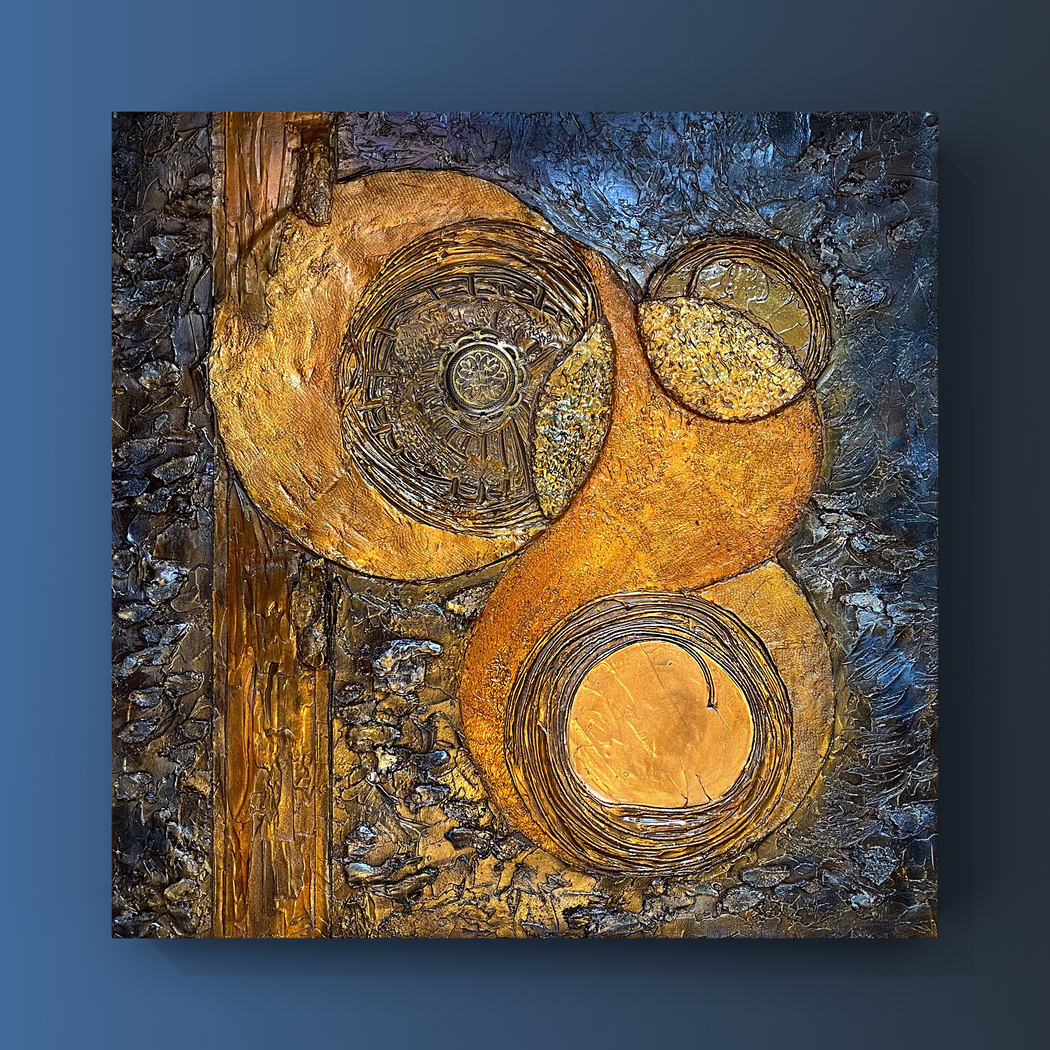 Larisa Botnaryuk | The Search for Harmony | 2024
Larisa Botnaryuk | The Search for Harmony | 2024
Your works often include fantastical and surreal elements. What artists or movements influence your creative approach, and how do you incorporate those influences into your work?
I am inspired by the works, signature styles, and philosophies of artists such as Kay Sage, Giorgio de Chirico, and Salvador Dalí.
Reading about Salvador Dalí, I noticed that he often shocked audiences, who were used to calm landscapes and portraits, with his bold presentations and perspectives. He wanted to show everyday things and topics in a different light.
Overall, what attracts me to surrealism is its focus on deep emotional expression through artistic vision and free associations, along with its “reliance” on psychoanalysis in creativity. I’m fascinated by delving into the subconscious.
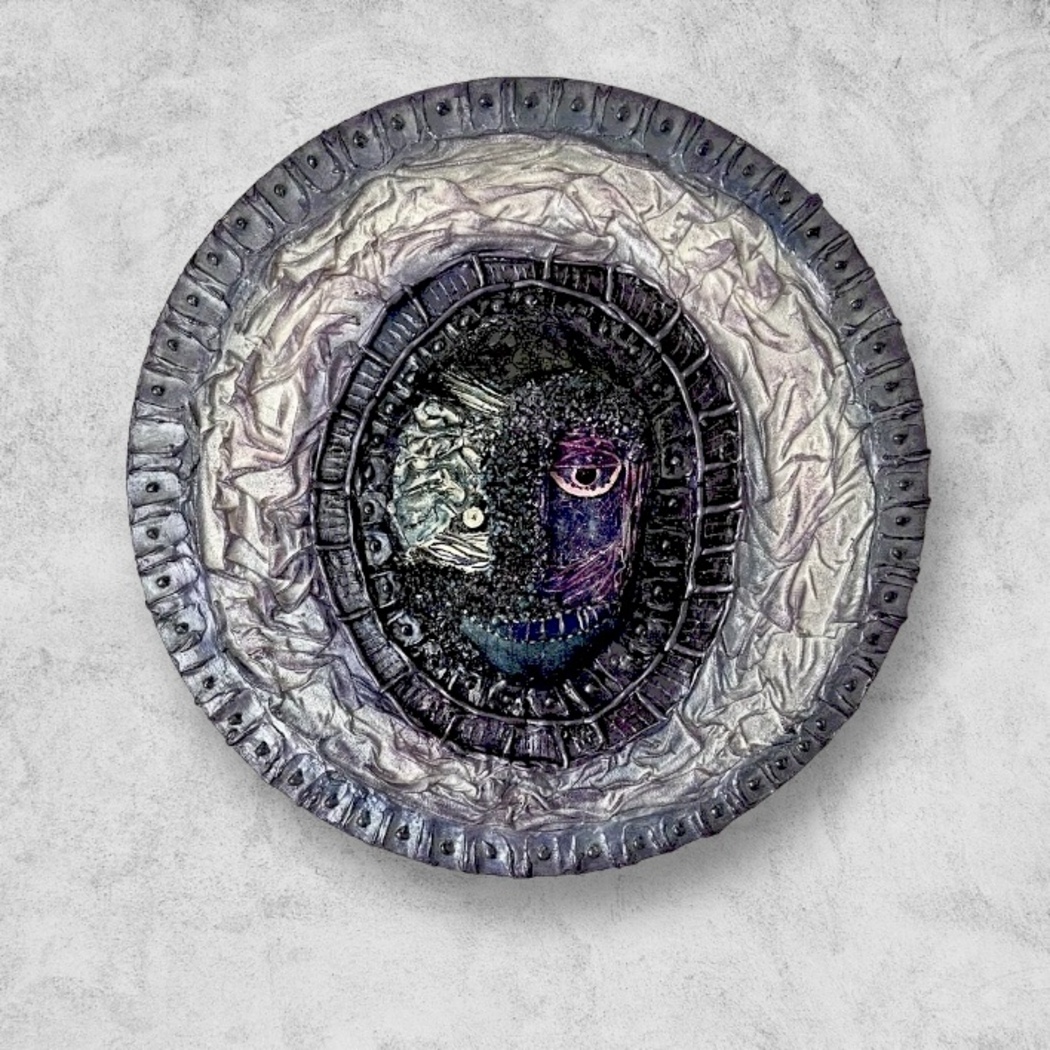 Larisa Botnaryuk | The Mask | 2024
Larisa Botnaryuk | The Mask | 2024
You are involved in various creative forms like sculpture, graphic art, and tattoo design. How do you balance these different mediums, and how do they complement one another in your overall artistic practice?
By nature, I am someone who is always curious to learn something new. Interestingly, I have both a need for solitude and a need for learning and change. Depending on the idea and inspiration, I easily switch from one activity to another. This creative rhythm gives me a lot of energy.
Sculpture allows me not only to see but also to feel volume, and I use these skills when applying color to a flat surface. Sometimes, I even incorporate sculpting elements into my paintings.
Tattooing is a unique form of art. Sometimes, it involves depicting volume on a living, three-dimensional surface, considering the distortion of lines and shapes when a person moves. The body’s curves and hollows require intentional distortions of proportions when designing a sketch. In this regard, anatomy and sculpture are my main assistants. Additionally, choosing pigments is crucial—one must calculate which pigment to use so that, once healed and settled into the skin’s lower layers, it produces the desired color and tone, taking the person’s skin tone into account. Here, my skills in working with color in painting are invaluable.
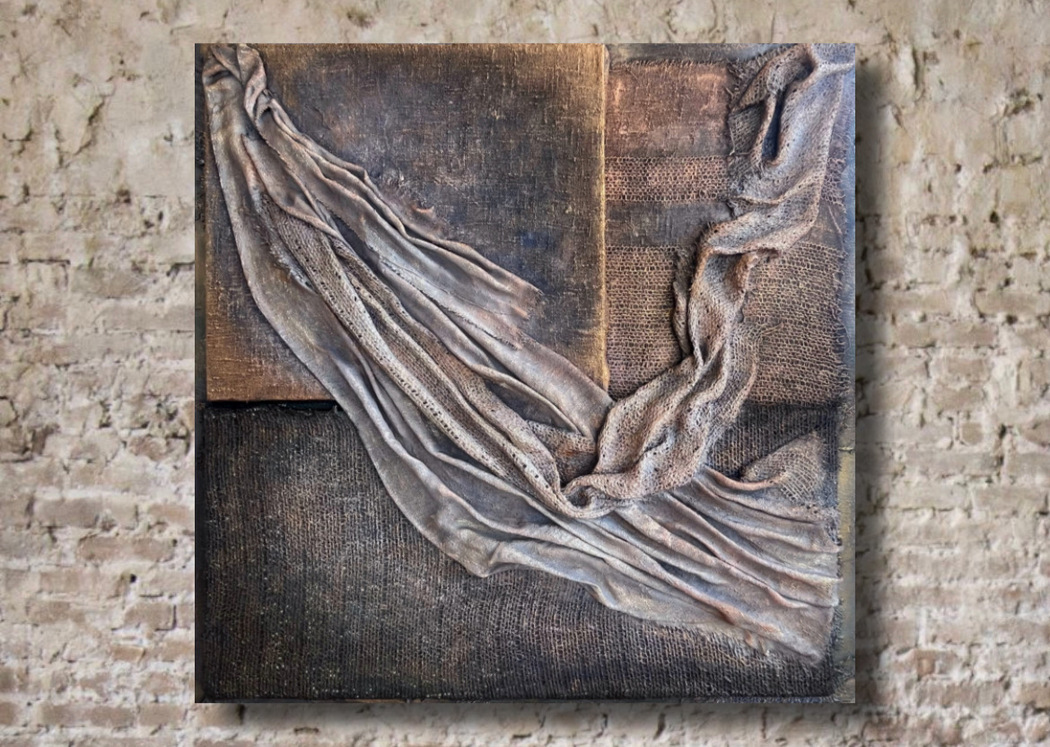 Larisa Botnaryuk | Facets | 2024
Larisa Botnaryuk | Facets | 2024
You mentioned that your art is inspired by surrealists, nature, and books. Can you share a particular book or natural scene that sparked a recent artwork?
I love the country of Abkhazia—this small patch of land holds all the beauty of nature: the sea, rivers, waterfalls, mountains, caves. In one country, there are eight climate zones, with a corresponding vast variety of vegetation. You can see both a summer rich in fruits along the coast and snowy winter high in the mountains. Such a rich combination of colors, light, and textures in this country’s nature can be found in my work through the principles of combining various techniques, materials, and the interplay of light and color, harmonizing different forms.
Every book or article I read resonates with my life experiences or the experiences of others that I wish to express through my paintings. My creativity is a way to convey the wisdom and philosophy of life through the visualization of images.
The creation of my latest paintings “The Path to the Dream” and “Dreams and Goals” was inspired by reading three books:
Irina Gibermann’s “I Live as I Want”—this book is about building a relationship with oneself that allows you to peek behind the curtains of your own psyche, put everything in place, and start confidently looking to the future.
Anna Babich’s “Inner Support”—in this book, the author talks about tools for creating internal support.
Barbara Sher’s “It’s Not Too Late to Dream”—this book helps anyone turn their vague desires and dreams into concrete results.
So far, I’ve transferred only two key ideas from these readings onto canvas, but I plan to continue exploring this topic since I haven’t said everything yet.
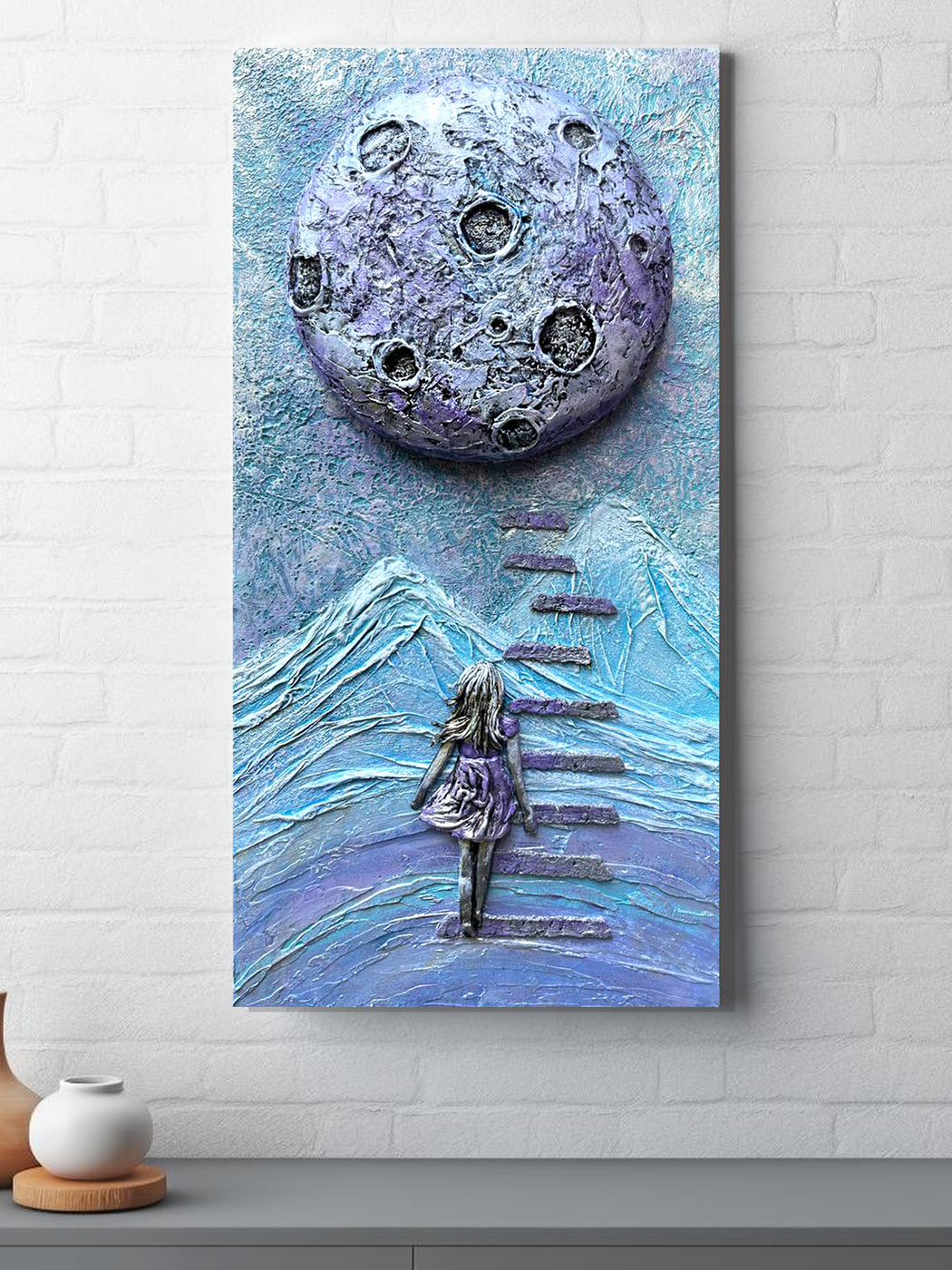 Larisa Botnaryuk | The Path to the Dream | 2024
Larisa Botnaryuk | The Path to the Dream | 2024
Your work seems to invite viewers to reflect on personal growth and harmony with the world. How do you think art can serve as a tool for personal or societal transformation?
Yes! I firmly believe that through creativity, an artist can guide a thoughtful person toward a certain direction of development. They may agree with my thoughts and continue reflecting, or they may disagree and seek arguments within their own ideas. Either way, the very process of thinking on the highlighted topic is already a path to personal growth and transformation.

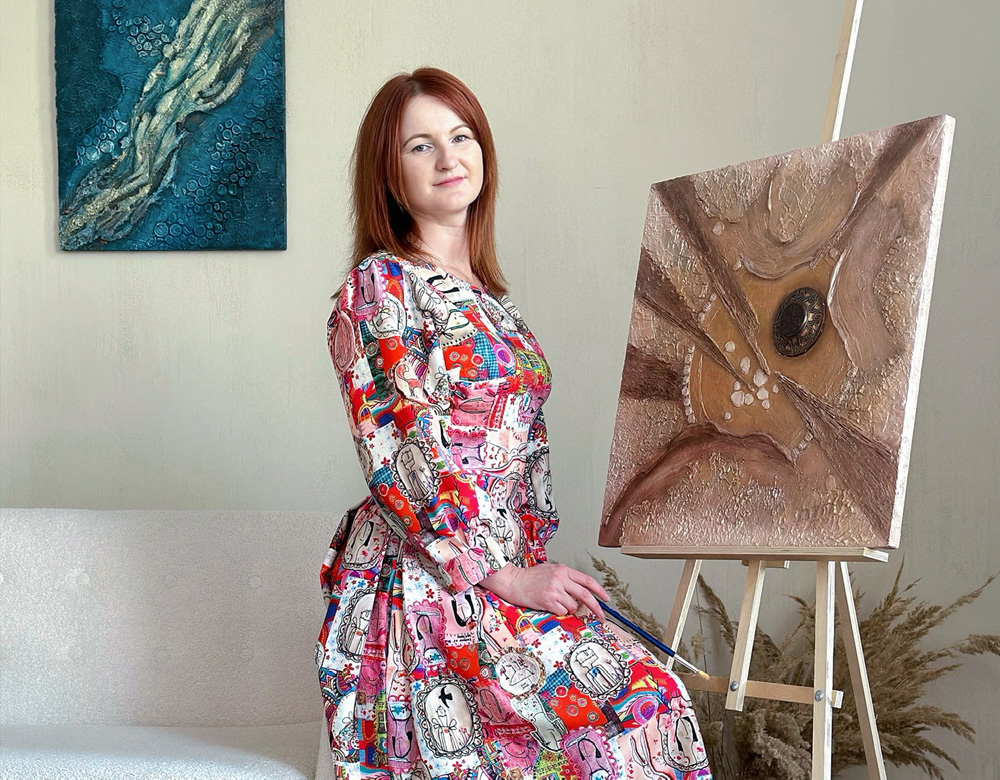
Julie
A talented and promising artist, her work impresses with a variety of genres and performance techniques.